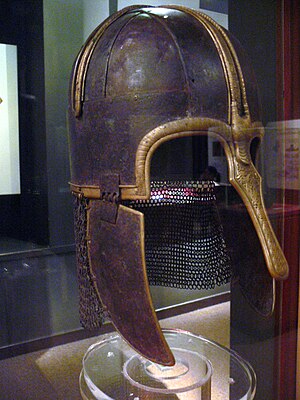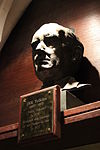Portal:Anglo-Saxon England
Anglo-Saxon EnglandSelected articleThe members of the Gregorian mission were Italian monks and priests sent by Pope Gregory the Great to Britain in the late 6th and early 7th centuries to convert and Christianize the Anglo-Saxons from their native Anglo-Saxon paganism. The first group consisted of about 40 monks and priests, some of whom had been monks in Gregory's own monastery in Rome. After a long trip, during which they almost gave up and returned to Rome, they arrived in the Anglo-Saxon kingdom of Kent in 597. Gregory sent a second group of missionaries in 601 as reinforcements, along with books and relics for the newly founded churches. From Kent, the missionaries spread to the East Anglian kingdom and to the north of Britain, but after King Æthelberht of Kent's death, the mission was mostly confined to Kent. Another mission was sent to the kingdom of Northumbria when Æthelberht's daughter married King Edwin of Northumbria around 625. After Edwin's death in 633, a pagan backlash against Christianization occurred, and the mission was again confined to Kent; most of the missionaries fled Northumbria because they feared the pagans who returned to power after Edwin's death. (more...) Did you know?
SubcategoriesSelected imageSelected biographyJohn Ronald Reuel Tolkien, CBE (/ˈtɒlkiːn/; 3 January 1892 – 2 September 1973) was an English writer, poet, philologist, and university professor, best known as the author of the classic high fantasy works The Hobbit, The Lord of the Rings, and The Silmarillion. After his death, Tolkien's son Christopher published a series of works based on his father's extensive notes and unpublished manuscripts, including The Silmarillion. These, together with The Hobbit and The Lord of the Rings form a connected body of tales, poems, fictional histories, invented languages, and literary essays about a fantasy world called Arda, and Middle-earth within it. Between 1951 and 1955, Tolkien applied the term legendarium to the larger part of these writings. (more...) Things you can do
Featured articles and lists
Related portalsWikiProjects
Associated WikimediaThe following Wikimedia Foundation sister projects provide more on this subject:
| |||||||||||||















